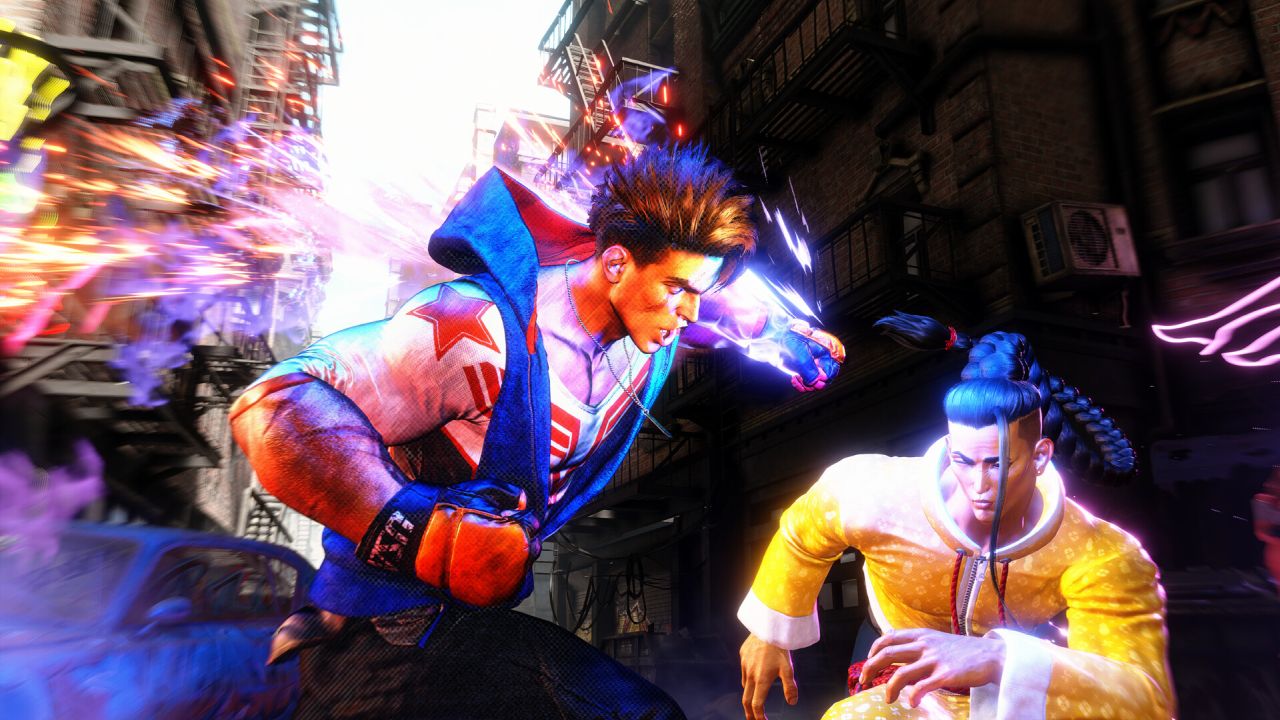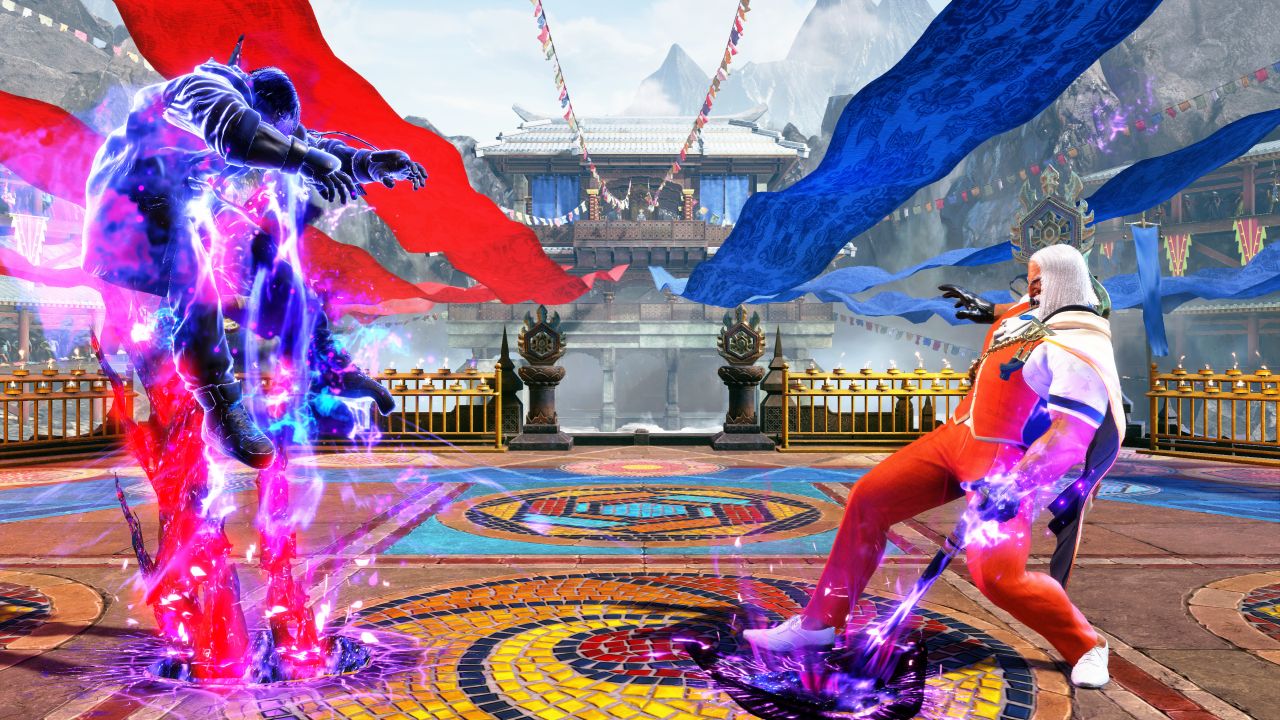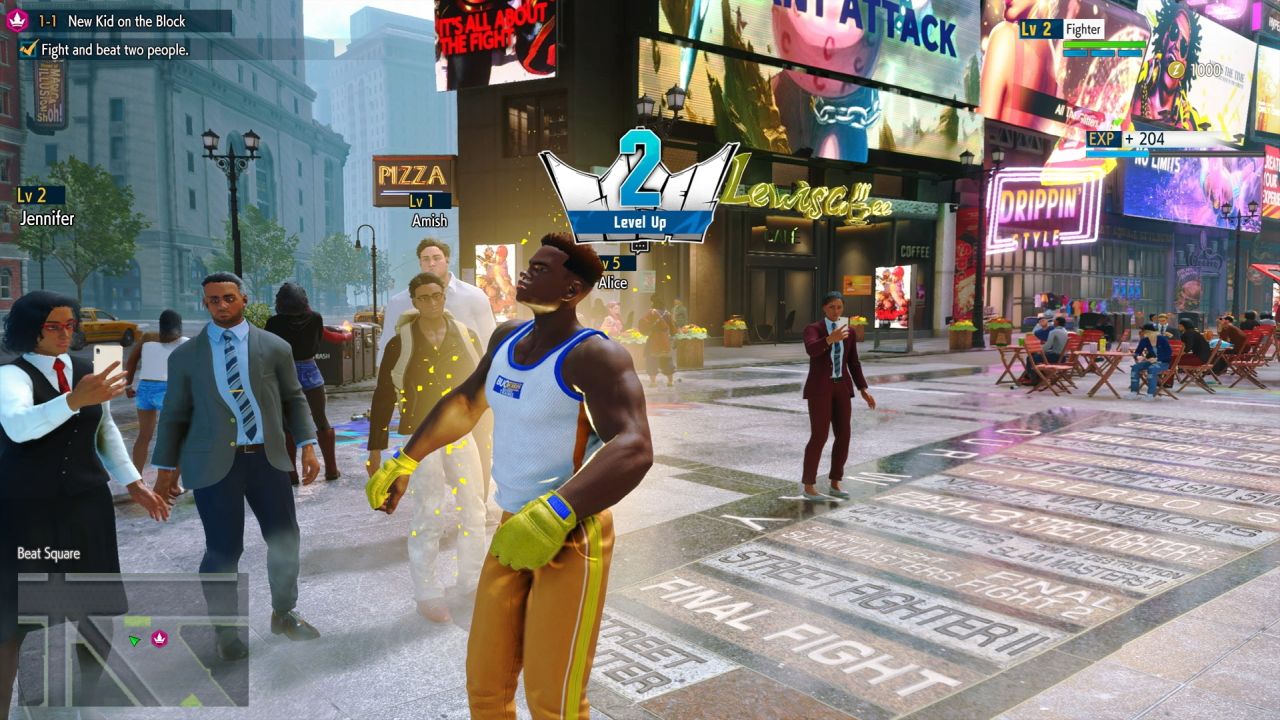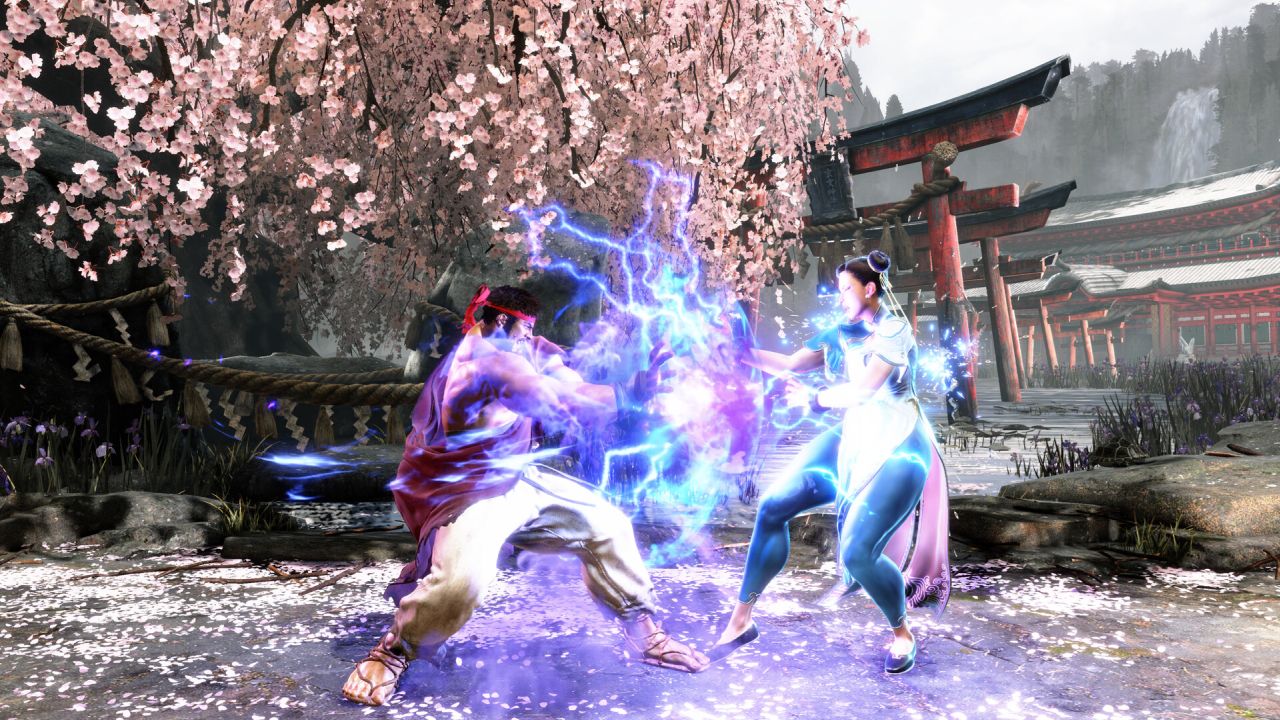Street Fighter 6 Review
It feels safe to say that we are currently in the midst of another golden age of fighting games. Classic franchises such as Mortal Kombat and The King of Fighters are delivering solid new entries, and newer fare such as DNF Duel and Them’s Fightin’ Herds have established themselves as players as well. And then there is Capcom’s iconic Street Fighter, which has managed to rise from the ashes. After a rough launch, Street Fighter V blossomed into a solid enough fighter. Taking the hard lessons learned from that, the studio has returned with the first new entry in seven years with Street Fighter 6.

The big issue with the previous entry was that upon launch it was as bare bones as you could get away with charging money for. There was almost nothing in the way of single-player fun, and even the multiplayer was light on options. Combined with a lackluster roster and poor online performance, it was a major disappointment out of the gate. From the get-go, you’ll see that Capcom learned their lesson with Street Fighter 6. There are full-fledged single-player modes, a jam-packed multiplayer hub and a roster that smartly mixes classic characters with intriguing new combatants. It’s a significant step-up for the series, and a much-needed make-good to get casual gamers reinvested with it.
While I wouldn’t say the mechanics of Street Fighter V needed to change, Capcom decided to re-tool the engine for this entry. The big addition for this go-around is the Drive Gauge. The system pulls together some of the more advanced techniques of the fighter under one meter. Abilities such as super attacks, parries and stuns are grouped into this refillable gauge. You start with the meter filled, but if the meter gets depleted, movement will become sluggish, and certain maneuvers will be inaccessible. The benefit to this system, though, is that everything is much easier and snappier to utilize. Parrying an opponent’s projectile, and then striking them with a potent Drive Impact attack can easily be done with just the press of a few buttons. It’s great for helping novices get their footing with the title, as well as making sure that every battle can be winnable right up until the final blow has landed.
The other major mechanic addition is the optional modern control scheme. This serves as the default when you first jump into the game, and it’s easy to see why Capcom made that decision. The simplified set-up sets special moves to a specific button, with a directional input being used to unleash different attacks. It also gives you the ability to easily chain combos by using the triggers in conjunction with light and medium strikes. It’s easy to get the hang of this control scheme and start dealing out impressive chains of attacks. If this doesn’t appeal to you, though, the classic control scheme is available for use as well.
Between the new control scheme and the Drive Gauge, Street Fighter 6 feels more dynamic and inviting than the previous entry. Due to the ease in which special attacks and defensive techniques can be deployed, there’s a fluidity to the combat that makes each match exhilarating. As much as I love the genre, I’ve never considered myself a master at it. With the Drive Gauge, though, I can more than hold my own online now.

The 18-combatant roster for Street Fighter 6 is one of the strongest base rosters in recent franchise history. You have the eight original World Warriors (Ryu, Ken, Chun-Li, etc.), a few of the popular later additions (Cammy, Juri) and six new to the series fighters. And unlike V, these new fighters aren’t unappealing freaks. Each one of them has their own flair and style of play that will appeal to different gamers. The grappling heavy Marisa and the drunken kung-fu stylings of Jamie feel completely different from one another. Although I’m still working on finding my main fighter, I never felt that one was lesser than another. They all have their own advantages and disadvantages. It’s just a matter of finding which style works best.
The modes of Street Fighter 6 are grouped into three different hubs: World Tour, Battle Hub and Fighting Ground. Fighting Ground houses the traditional modes you would expect from a fighting game. Online and local versus play, extreme battles, tutorials, and Arcade mode are just a few of the options you can find here. Arcade is probably what most will gravitate towards upon first booting up the title, and it’s nice to see it return. As per tradition, this mode has you fight through a series of opponents using one of the warriors. As you progress, you’ll get cutscenes going further into why your fighter does what they do. For Ken, it’s to clear their name following being falsely accused of a crime. For new-comer Kimberly, it’s about finding out what happened to her uncle. There’s not a ton of depth to these scenes, but they serve as nice rewards for running through the gauntlet with each character.
Extreme Battles are basically what they sound like: extreme takes on regular versus. Specifically, modifiers that dramatically change the flow of a match. Some of the options include hazards that cause damage popping up on-screen, and others remove the use of actions such as jumping or special attacks. A fun way to mix things up if you get bored of traditional matches. To hone your skills for these trials, the hefty number of tutorials and training options will more than get you up to speed. You can find explanations for not just the core basics of the title, but also specific character guides. I found them to be quite helpful for learning how to use grapplers such as Zangief and Marisa, who play way different from the characters I normally would use.
Arcade may be the traditional single-player option, but World Tour is Capcom’s stab at a more expansive experience. In this mode, you’ll get to chance to create your very own character with a surprisingly robust suite of options. Honestly, it’s one of the better character creators I have come across in recent memory. Once you do that, you’ll venture into Metro City to learn what the true meaning of strength is. You begin this journey by training with cover star Luke, but as you progress, you’ll travel around the world learning from the other World Warriors. Mastering their techniques let you use them in your own unique move-sets. This can lead to you focusing on one master’s skills alone, or by mixing attacks from everyone.

World Tour is not Capcom’s attempt at emulating the storytelling success of Mortal Kombat’s campaign mode, though. It’s trying to be something more expansive, and a lot weirder. To level up both the base attributes of your character as well as their proficiency with their teacher’s style, they need to fight. You can do this by engaging in combat with just about any NPC you find roaming the streets. They can be gang members looking to take over Metro City, or octogenarians just going about their day. You could even find yourself battling multiple opponents at once. Winning gets you the necessary experience, as well as an assortment of different items. You could get food to heal yourself, or dye to change the color of the clothes you are wearing. It’s an absurd premise, but it fits within the heightened reality of the franchise.
The mode is a bit of a mixed bag all-around, though. I enjoyed the references Capcom packed into the story and getting to hang with the main cast proves to be rather entertaining. However, your character is a disappointing mute, and the missions aren’t exactly the most thrilling; lots of fetch quests and being forced to run from point to point to talk to strangers. There are also noticeable performance issues within the mode. Perhaps owing to how quick you can go from exploration to battle, the fights feel slower than regular matches. It wasn’t the biggest issue for me, but there’s also a good amount of grinding to be done. Everyone you can fight has an individual level, and if you aren’t at their level, you’re going to get whooped. So, you need to spend a good amount of time competing in battles that are way too easy.
The final section of Street Fighter 6 is the Battle Hub. While casual and ranked matches can be accessed through the Fighting Ground, the Battle Hub is the main location for the title’s multiplayer options. It’s essentially a giant arena where you bring your avatar to seek out a fight. You can do this by either sitting at an arcade cabinet, where you can battle with the main roster, or by going onto what looks like a dance floor to do battle with avatars only. Or if you don’t feel like fighting, you can choose to spectate between any of the matches going on between other players. There is also a rotating selection of classic Capcom arcade hits to play as well.
There’s a good number of online options included, and they should be enjoyable for both casual and professional fighters. Of course, the best thing about the online play is that the net code is fantastic. I found myself on a few different servers when playing online, and each time I found the action to run fantastically. Rollback netcode has been significantly improved, and a major step up over the disappointing use of it in Street Fighter V. I don’t want to keep harping on poor SFV, but the difference in online play is gigantic.

Running on the RE Engine, Street Fighter 6 is quite the looker at times. The character models for the main cast are gorgeous, and I really like how Capcom switched things up for the returning cast. The new designs for Dhalsim and Ryu are particularly great. The new cast has plenty of style as well, with my personal favorites being the French ballerina Manon and T.Hawk protégé Lily. They are all fluidly animated as well. Every punch, kick and spin move has been carefully crafted to showcase their punishing power and graceful movement. The touch of adding splashes of color to the Drive Impact strikes is a nice touch too.
However, not everything looks up to the same level. Specifically, the people and places you come across in World Tour can look rather poor. The avatars you can create in particular look like they are from a different console generation. There are issues with pieces of clothing and hair clipping through each other that can be tough to take your eyes off of. Understandably, the different NPCs you battle lack the detail of the main roster. I get that, but I do wish there had been more variety with their designs. If you’re out grinding for XP, it can feel like you are facing off against the same batch of enemies time and time again.
The one area where this sequel struggles to match its predecessor, though, is the audio design. The previous entry featured a great soundtrack, with some of the best tracks in the history of the franchise. From my time with this entry, nothing has really stood out. Capcom went hard with the hip-hop influence, and it hasn’t quite clicked with me yet. The much-ballyhooed addition of in-game commentary also isn’t doing much for me either. It’s cool that they got some experienced eSports commentators to come in, but it comes across as just a smidge too scripted. It’s about on par with the commentary for the WWE 2K games, which is to say mediocre at best.
After everything that went wrong with the last entry, Street Fighter 6 is exactly what the series needed to get fully back on track. The single-player options aren’t perfect, but they have their charms. The netcode is fantastic, though, and there are plenty of modes to keep you fighting well throughout the coming months. And built off the RE Engine, the graphics are top-notch in most areas. It may not be perfect, as I think World Tour could have used some fine tuning and the soundtrack doesn’t quite hit as hard as past entries, but there’s a lot to love about the game. In the face of heavy competition, Capcom has once again claimed their spot as the best in the genre.
